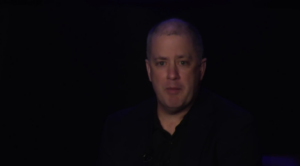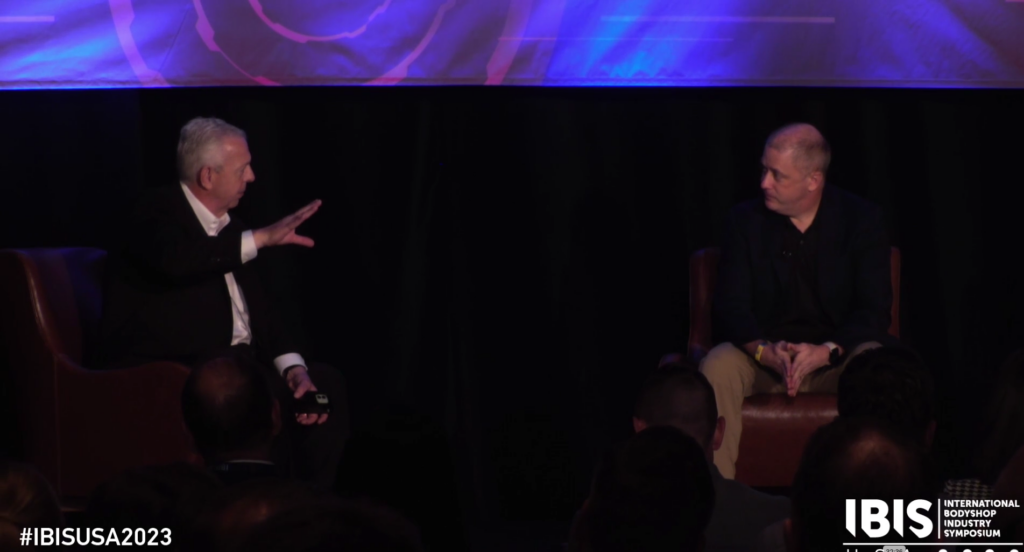
OnStar exec says telematics will create ‘transformative’ insurance process
By onCollision Repair | Insurance
The president of OnStar Insurance detailed how telematics have the capability to improve and expedite the repair process following a collision.
During his keynote speech during the recent International Bodyshop Industry Symposium (IBIS) in Nashville, Andrew Rose told delegates that onboard data will eventually create a “transformative” insurance process from the moment an accident occurs.
“You can imagine in the future that before that vehicle has fully stopped rolling, it’s already sending data back saying ‘these things are false; these things look like they’re broken,’” he said. “Then you can use machine learning behind the scenes to say ‘there is a 98% probability that bumper is going to need replaced, there’s an 87% probability this light is going to need replaced, there’s a 49% probability the radiator is going to be replaced,’ and have those parts ordered almost instantly. The repairs can be scheduled immediately.”
He said in such a scenario OnStar, GM’s telematics-based insurance provider, would like to partner with shops and prioritize repairs and reduce cycle times to ensure customers have a positive experience.
“Imagine the reduction in supplements,” he said. “You hate ‘em, and so do we. if you can get it accurate the first time, everybody wins.”
Rose also touched on how telematics can lower insurance costs for drivers, incentivizing them to practice good behind-the-wheel habits and reducing their chances of being involved in an accident.
He shared a glimpse into his version of the future, where good drivers are rewarded with congratulatory notes on their onboard screen and given an opportunity to switch to an insurer that rewards such behavior with better rates.
Repair complexity
While technology is making some types of accidents (such as bumping into something while in reverse) rare, he acknowledged that it’s also making vehicles more difficult to reverse when collisions do happen.
“When that bumper does eventually hit something, the repairs are far more complex,” he said. “Everything has changed about that. Now it’s sensors that have to be dealt with, not just the bumper. There are recalibrations that have to take place.
“Even glass claims are now much more complex. The complexity comes from the evolution of these vehicles. Now, [there] 1,000-plus semiconductors on average in the vehicles. These aren’t just computers on wheels, these are super computers on wheels. Remember when a seat was just a seat? Now it has a back scratcher, a heater, a fan, a buzz, you can watch a movie. It’s amazing, but all that complexity makes the repairs more difficult: more challenging for you, more costly for us.”
Rose also acknowledged the challenges repairers face in fixing such vehicles amid supply chain challenges and the need for workers with technological certifications.
He said it’s necessary for OEMs, technicians and insurers to collaborate and find solutions to challenges the collision repair industry is facing.
“The vehicles leave our manufacturing lines with some incredible safety features these days. They help us prevent or diminish the significance of an accident when it happens,” Rose said. “But those people want those vehicles back on the road and we want them as safe as they were when they came off the line [after a collision].
“And so from that standpoint, that’s where I see the collaboration and the cooperation that needs to take place between all three parties. We want those vehicles returned back to the state they were when they came off the manufacturing line, and that’s the partnership. Working with the industry, working with partners that have that goal in mind, is going to be a key step for us as we build out our ecosystem.”

Cost control
IBIS Boardmember Sean Carey during a sit down discussion with Rose asked how insurers can foresee repair costs, planning and procedures. He also asked where inflated repair costs will have the largest impact on insurers.
Rose said it comes down to three things: loss ratio, expense ratio and the claims handling expenses.
“You can create all the fancy metrics that you want, but at the end of the day, the math is the same. You have to run those numbers,” Rose said. “When you look at a loss ratio, it is frequency (the number of times you’re going to have an accident) by how bad the accident is. And overall, a lot of the technology is aimed at reducing the number of times you have an accident, but often the stuff that does that costs money.”
Rose added that while insurers are taking a financial hit now, they will likely start seeing some relief over time as the frequency and severity of accidents drops alongside the cost of repairs.
“A lot of the technology that is coming out now is expensive, but it will get cheaper,” he said. “The curve that we look for to ultimately intersect is the frequency reductions that happen in concert with the cost it takes to have those frequency [and severity] reductions.”
Those interested in listening to the full presentation can do so here.
Images
Featured image credit: OnStar Insurance President Andrew Rose/International Bodyshop Industry Symposium
Secondary image: IBIS Boardmember Sean Carey (left) and OnStar Insurance President Andrew Rose/International Bodyshop Industry Symposium
